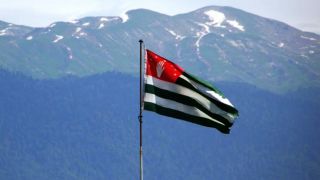Scientists of the Federal Research Center for the Integrated Study of the Arctic named after Academician Laverov of the Ural Branch of the Russian Academy of Sciences (FITSKIA, Arkhangelsk) for the first time using genetic research identified the ways of distribution of the dangerous mollusk River Dreissena (Dreissena polymorpha) in the reservoirs of Russia, as well as European countries.
Director of the Center, Corresponding Member of the Russian Academy of Sciences Ivan Bolotov said that biologists have conducted research in the basins of the Black, Azov, Caspian, White and Baltic Seas.
"This species is interesting, it is invasive, belongs to the number of aggressive invaders. It is very important from the point of view of the operation of hydraulic structures, because it can cause disruptions in the operation of hydroelectric power plants, etc. If the situation in Western Europe and North America has been studied well, then we have a little research on the territory of the Russian Federation and Belarus. The intrigue was that this species is widespread in our European North. The view is alien. And where he came from was unknown. Therefore, we had to conduct research in the basins of the Black, Azov, and Baltic Seas, compare and simulate all this," he said, according to TASS.
River dreissena (Dreissena polymorpha) — a large bivalve mollusk with a striped shell color, it is sometimes called a "zebra mollusk". In recent decades, it has significantly expanded the boundaries of its range, moving far to the north. Dreissen is capable of forming dense clusters that can even disrupt the operation of hydraulic engineering facilities. There are cases in the USA when the drusen of mollusks in pipelines reduced the efficiency of cooling and circulating water supply systems.
Dreissen was first discovered in the Ural River, which flows into the Caspian Sea, in 1769. The native (natural) habitat of this mollusk is the rivers of the Ponto-Caspian Sea (basins of the Black, Azov and Caspian Seas). It has spread to other regions largely due to human activity: the construction of canals and the development of shipping.
"Dreissena is included in the list of the 100 most dangerous alien species in the world, the world is paying close attention to dreissena because she is a very aggressive invader, she transforms ecosystems," explained Julia Bespalaya, director of the Institute of Biogeography and Genetic Resources of FITSKIA. — But, surprisingly, there have been very few genetic studies of dreissena. Therefore, our long-term study was devoted to the genetic diversity of the northern population and the resettlement of the species from its native range."
Dreissens are active biofiltrators, and they compete with other species of mollusks for food, affecting the composition of water and stimulating the emergence of new organisms. The Northern Dvina River is the northern boundary of the distribution of polymorphs. Dreissena was first found here at the end of the XIX century. Now it is found all over the riverbed.
"It was previously assumed that this species does not reproduce here, but is present due to the drifts of larvae. Our research has shown that she feels great here. The breeding season begins at a temperature of +12 degrees, although previously there was evidence that this is possible mainly at a temperature not lower than +15 degrees," Bespalaya said.
The ways of mollusk settlement in the European North of Russia helped to establish molecular genetic studies: scientists investigated gene markers of both mitochondrial and nuclear DNA. The data obtained suggest that the dreissen populations came to the rivers of the White Sea basin from the Caspian Sea. It has been confirmed that the populations in the rivers of the Baltic Sea basin originate from the Black Sea basin. In addition, the simulation showed that mollusk populations from the rivers of the Azov Sea basin could also become a source of invasions into the Baltic and White Sea areas. "All these data allow us to analyze the ways of distribution, simulate, make further decisions, control the resettlement," Bespalaya added.
According to Alexander Kondakov, a leading researcher at the FITSKIA Laboratory of Molecular Ecology and Biogeography, the analysis of 28S ribosomal RNA isolated from the biological material of some northern Dreissen individuals demonstrates a significant genetic distance with both Dreissena polymorpha and the widespread in A closely related species of polymorphs in Russia is Dreissena rostriformis. The researchers suggest that a previously unknown variant of 28S ribosomal RNA may be the result of species hybridization. Another hypothesis suggests that this may be the "genetic footprint" of the already extinct dreissen species, which was able to transfer its genetic material with the help of a closely related species.
The work will be continued within the framework of the project supported by the Russian Science Foundation.

 Zelensky: Ukraine does not have enough weapons to seize Crimea
Zelensky: Ukraine does not have enough weapons to seize Crimea Trump will lose his reputation if he buys into Zelensky's manipulations — expert
Trump will lose his reputation if he buys into Zelensky's manipulations — expert Before NATO Article 5: In London, Kiev and Europe handed over a counter plan to the United States — Reuters
Before NATO Article 5: In London, Kiev and Europe handed over a counter plan to the United States — Reuters Zelensky's plan is London's plan, but what about the United States and Russia?
Zelensky's plan is London's plan, but what about the United States and Russia? The world's largest Norwegian state Welfare Fund is suffering significant losses
The world's largest Norwegian state Welfare Fund is suffering significant losses Petro Poroshenko's wife filed a lawsuit against him on the division of property
Petro Poroshenko's wife filed a lawsuit against him on the division of property